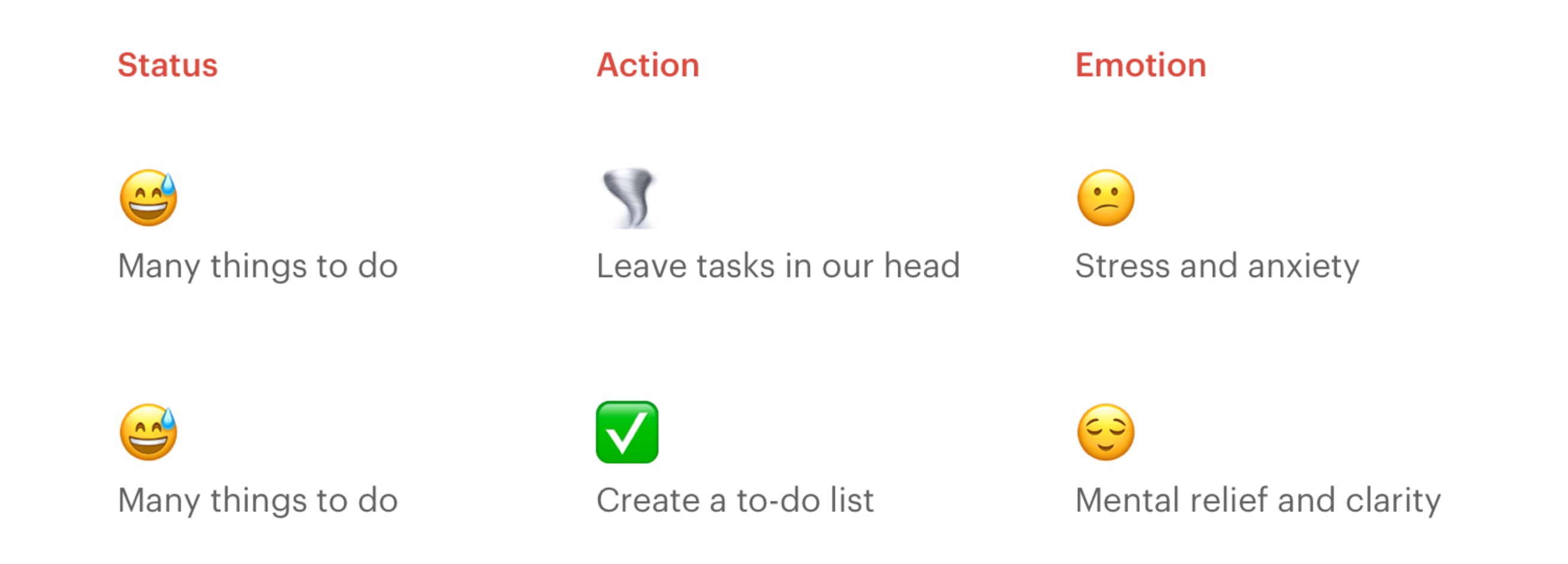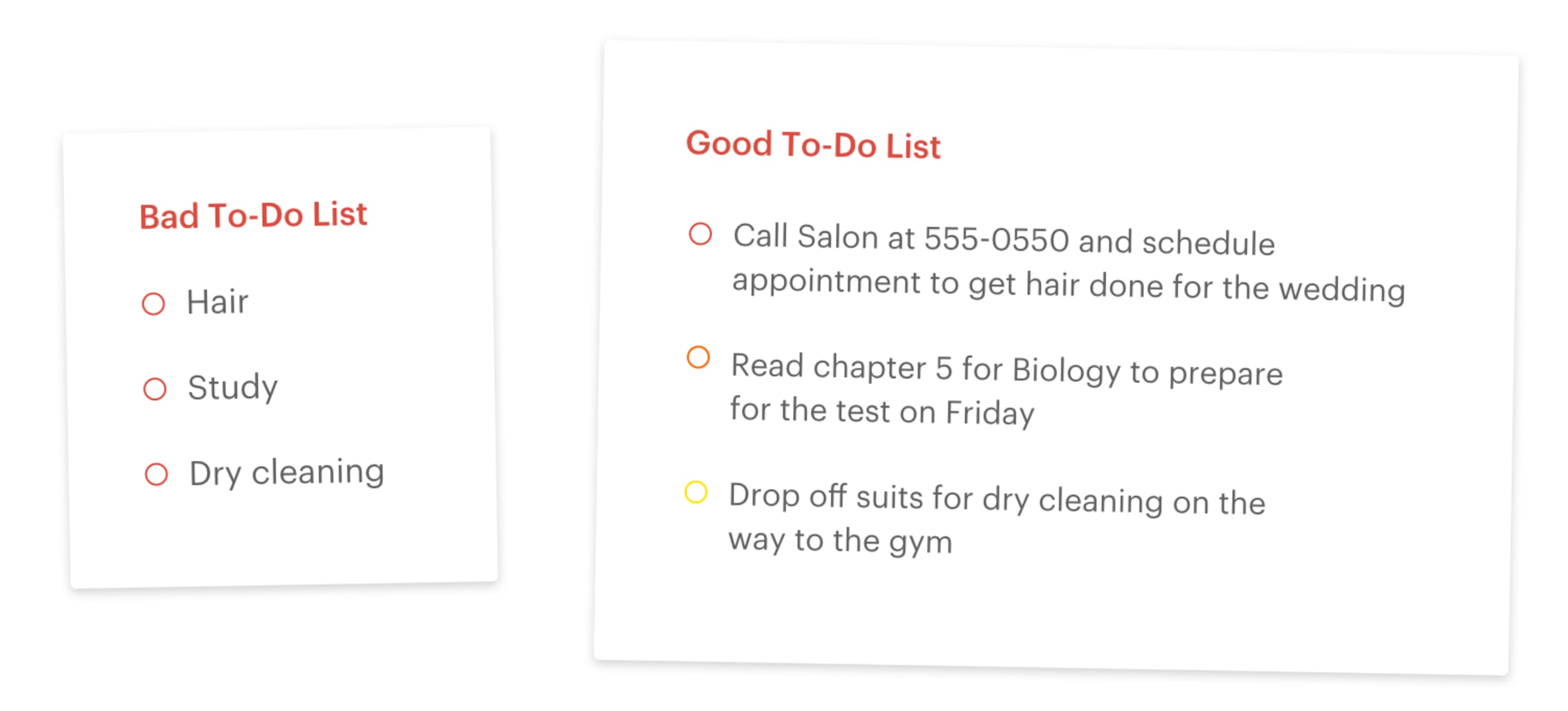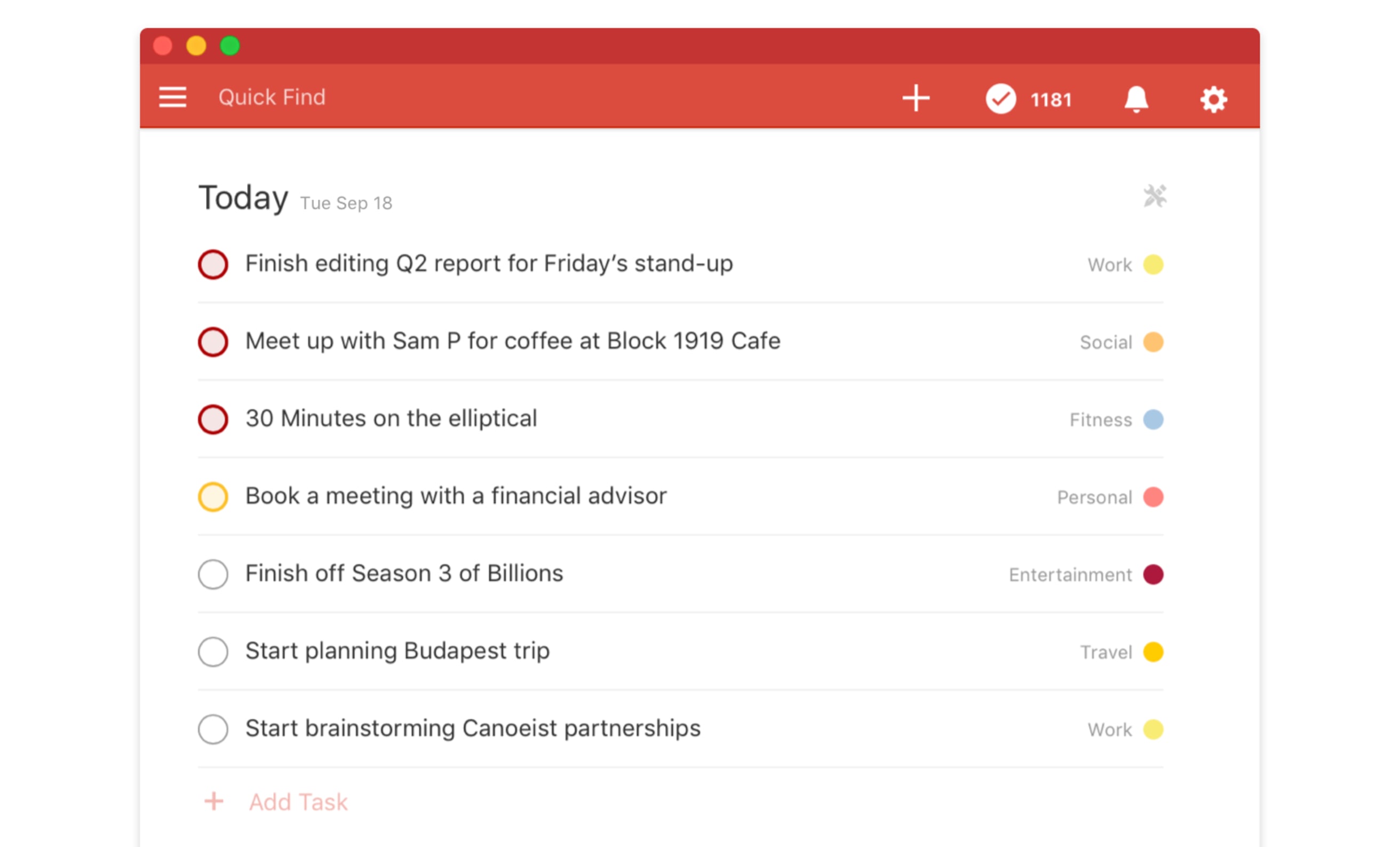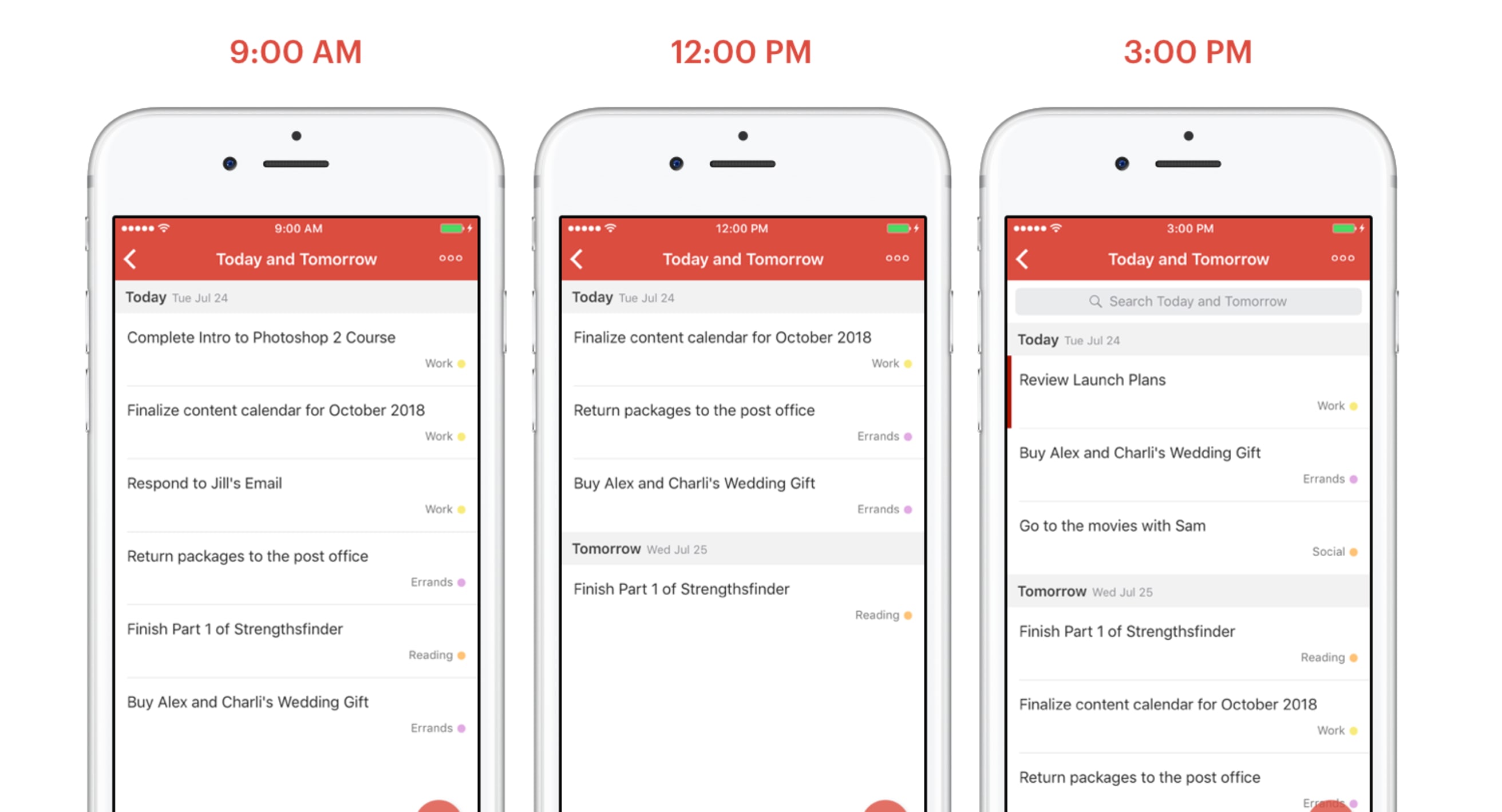For some, just the idea of having a to-do list feels like a burden. It’s a list of chores and long overdue assignments, things that are so mundane and/or unpleasant we would willfully forget to do them if they weren’t written out in front of us.
And honestly, when you’re completely slammed, the idea of seeing everything on your plate all laid out in one place is a sure-fire way to inspire some creative yet thoroughly counterproductive avoidance behaviors.
While there are some out there who self-identify as “to-do list people” (you know who you are), this article is for the rest of us mere mortals. Those of us who want — at times desperately — to feel organized and in control, yet who somehow always manage to let a 50-item to-do list grow so ancient it becomes an actual ghost that haunts us in our sleep.
If that’s you, then hopefully you’ll come away from this article with the productivity equivalent of a Ghostbuster proton pack to trap the negative energy that was your to-do list and turn it into something that leaves you feeling totally prepared to rock your day, every day.
That was a long and very nerdy way of saying, you do not have to be born a “to-do list” person to make your to-do list work for you. I promise.
1. Learn to Cherish Your To-Do List

Get addicted to that good feeling of mental clarity that comes from writing your tasks down.
Maybe you look at to-do lists like homework — they’re just a stuffy obligation, a tedious reminder of all things the things that are weighing on you. But that’s actually the opposite of what a to-do list should be. A to-do list is a powerful tool for forgetting all the things you need to get done, at least temporarily. Let me explain.
Research shows that the human brain is wired to fixate on all the stuff you need to get done and forget about the things you’ve already finished. This fixation on uncompleted tasks is called the Zeignarik effect. Our brains are so preoccupied with all our unfinished business that thoughts about those tasks will intrude on everyday life until they’re complete.
The Z-effect, as I like to call it, explains why it’s so easy to feel overwhelmed when we’ve let lots of tasks go undone — the ghosts of unfinished business are literally haunting you. Worse still, thinking about all those tasks takes up all the mental space and focused required to actually complete one.
Fortunately since the Z-effect was first discovered, research has also revealed a nifty little way to short-circuit it. It turns out that making a plan to complete a task provides the same mental relief as actually completing the task. According to Psychology Today, even if mapping out the plan is all you manage to get done, you can still see an emotional payoff:
Put another way, writing out a to-do list tricks your brain into quieting down so you can break the paralysis and get something, anything, done.
That’s why step number one in this to-do list program is to get addicted to that good feeling of mental clarity that comes from writing down your tasks instead of trying to keep them in your head. When you think about something you need to get done, it should be an automatic response to add it to your to-do list.
Note
Todoist Tip: The easiest way to get in the habit of adding tasks immediately is to make sure you can add them from anywhere — on your desktop, from your phone, from your web browser or even your email. Here are 11 of the fastest ways to get tasks out of your head and into your Todoist.
Of course, this mental jujitsu will only last so long before your brain gets wise to the fact that you’re not actually getting anything done, which brings us to step 2…
2. Don’t Write Your To-Do List For You, Write It for Your Lazy Future Self

A good to-do list removes as much friction as possible from actually getting started.
Even if you think you’re some kind of free spirit wild child who just doesn’t believe in calendars or structure or boundaries, your brain simply doesn’t work that way. Yes, even if you consider yourself a left-brainer. Regardless of how much you may think you like to just “go with the flow”, the foundation of your brain’s functioning relies on what developmental psychologists call “schemas”.
Schemas are essentially mini to-do lists that fill your brain. They’re mental maps telling you how you think about and do things. Whenever we go somewhere or meet someone new, our brain uses the schemas it’s developed from past experiences to help prepare us for what might come next. For instance, even if you walked into a bar you’d never been to before, you’d know how to order a drink because your brain already has a process for it. Likewise, when you set a goal, your brain refers to the internal process it’s already set for what you know about how to achieve said goal.
Your internal schemas are great for automating the routines that fill our days — brushing our teeth, buying groceries, responding when a coworker asks how your weekend was. But they break down when it comes to bigger-picture planning — like deciding what you should be working on right now.
A good to-do list replicates schemas on a much larger scale. When your Future Self reads a task, it should automatically trigger an action with as little extra thought as possible. Your brain might have its own schema for “How to drive a car”, that’s automatic. But your physical list is what tells you to drive to the dry cleaner, then the grocery store, and then the bank. The list presents the information you need to your brain in a language it can quickly and easily understand. And since our brains love things quick and easy, you may feel more inclined to complete things that are presented to you in this way.
This is why good to-do lists are thorough. As organizational guru David Allen tells his readers, your brain can too easily ignore vague notes like “groceries” or “vet”, because, where do you start? There is no first step there for your brain to latch onto. Instead, clarifying why something is important by outlining the steps necessary to complete the task will speak more directly to your brain’s internal schemas and encourage you to act.
For example, here is a bad to-do list:
Hair
Study
Dry cleaning
There’s too much missing information and extra thinking for your brain to do.
Now here’s that same to-do list done better:
Call Salon at 555–0550 and schedule appointment to get hair done for the wedding
Read chapter 5 for Biology to prepare for the test on Friday
Drop off dry cleaning on the way to the gym
Note
Todoist Tip: You can keep any reference materials you need — e.g., phone numbers, email addresses, documents, or other extra details — right with your tasks in Todoist using comments. It’s one more way to remove the mental energy and time required to actually do the thing.
Now you have all the information you need to quickly work chow down your tiny, snack-sized tasks with minimal extra mental effort. But which one should you work on first…?
3. Tasks Don’t Have Feelings, Play Favorites

Use your to-do list to separate the Must Do’s from the Nice To Do’s If I Had The Time.
You might think the whole point of a to-do list is simply to remember what you need to do. But some of us need to do a lot of stuff, and just the thought of writing all that down can be overwhelming. This is why your list should also be a hierarchy where you can separate the things that you absolutely must get done and the things you’d like to do if you have the time.
For instance, say you were planning a big party to celebrate the end of a grueling exam week. First of all, good for you. Secondly, you’re going to need a big to-do list!
There are the things that absolutely must happen if you want to both not fail your classes and have a party. And there are things that would be really nice to get done if you’re going for a Martha Stewart-level shindig. For example, say you need to cram for your chemistry exam, clean your living room for the party, and send invites, but it would also be nice if you could get to baking homemade cookies for the party (if you’re into that kind of thing), get your nails done before, buy some new shoes, and charge your camera.
Instead of turning that into one big list, or worst yet trying to keep it all straight in your head, sort it like so:
Must Do
Review chapters 7, 8, and 9 in Chemistry
Vacuum the living room and put all the paperwork in drawers
Email the class alias and let them know party details
Would Be Nice If I Have the Time
Bake cookies on Friday afternoon
Go to nail place on the way back from the exam
Order those shoes from (website) tonight
Put camera on charger before you head to the exam
Note
Todoist Tip: You can flag your Must Do tasks in Todoist using priority levels or with a custom @Must_Do label.
Suddenly what might just be a giant list of scary words become just 7 simple steps, 4 of which you know you can immediately drop if a surprise Beyoncé album drops or you get a 24-hour stomach flu.
This probably seems like simple common sense, but it’s amazing how quickly our prime mental hours fill up with the nice-to-do’s while the must-do’s get relegated to the last-minute, up-to-the-deadline, panic-fueled rush. But of course, even the best laid plans often go awry…
4. You Wrote It, You Can Change It

Continually reassess your to-do list throughout the day and week, and update it to reflect what you can actually get done.
It’s easy to feel like your list is some kind of prison you’ve trapped yourself in, where nothing outside the list exists until the list has been vanquished. But this is another example of turning our lists into an undermining enemy instead of a helpful friend. A list is merely a tool, like a paintbrush, and you, the list-maker, are the artist. You are allowed to paint whatever you want and you are also allowed to hate it and change it, or throw it away and start fresh any time you like.
Whatever your list is, it should always reflect what you can do, not just what you need to do. And this is why digital to-do list apps like Todoist can be so helpful. If you have a whole day of errands planned, but suddenly find you have a flat tire, it’s important to be able to pivot and not panic. In a digital medium, it’s easy to re-prioritize, delete, or simply move some impending task to the back burner.
This flexible approach is sometimes called a rolling to-do list, but it’s really just the most effective way to make sure you aren’t simply accumulating irrelevant tasks and sitting around feeling bad about all the things you can’t do. As billionaire and all-around super entrepreneur Sir Branson advises, “Make a list of small, manageable tasks to complete every day”.
Note
Todoist Tip: Make a habit of getting to Todoist Zero every day by postponing unfinished tasks rather than letting them pile up. In your Today view, just drag a task to the bottom of the list to postpone it for tomorrow. You can also drag and drop tasks between due dates in your Next 7 Days view.
By keeping things manageable and giving yourself flexibility to roll with the punches, you’re setting yourself up to feel good about maintaining relentless forward momentum no matter what the day throws at you. This is how a list becomes fuel for the next day’s progress, instead of a reminder of yesterday’s backlog. Which brings us to our fifth and final step to becoming a successful “to-do list person”…
5. Treat Your To-Do List Like A Trophy
Our famously successful to-do lister Sir Branson recently made headlines by sharing a to-do list he’d made in 1972. Among the items on his list? Buying items for his recording studio and opening more record shops. Considering that he’s gone from a powerful music mogul to an actual space mogul, we can safely say that worked out well for him.
But as the billionaire wrote on his blog:
Like we talked about before, the Z-effect means you’re more likely to feel guilty about all the things you’re procrastinating on rather than remembering all of the awesome things you have accomplished.
A conquered to-do list can be something that sets you on the path to major success, or simply helps you feel satisfied with the productivity of your day. Either way, the list will remind you that you have permission to celebrate yourself. It’s proof that you’re capable of accomplishing almost anything given enough time and focus, and the world of possibility that this opens up for you is something to celebrate in and of itself.
Note
Todoist Tip: It’s easy to get a list of all your completed tasks in Todoist in a single view. You can also track your progress by setting daily and weekly task goals and building your goal streaks.
As Branson caps off his sagely simple and straightforward list-making advice, “Celebrate your successes then make new lists of new goals.” Onward and upward.
Note
Ready to start conquering your to-do list? Try Todoist for free

